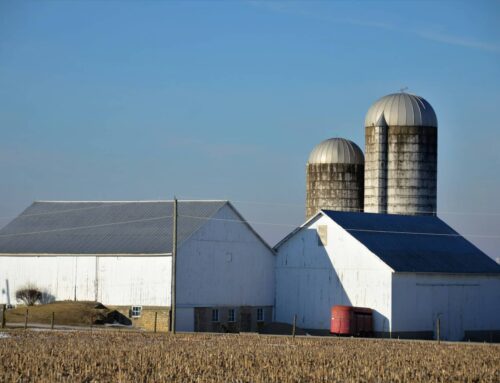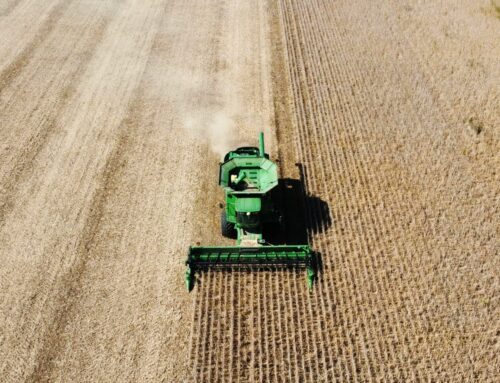Preparing the ground for an attempt to increase federal spending in a new farm bill, beneficiaries of federal agricultural programs are planting claims of spectacular savings from passage of the 2014 farm bill.
Members of the House and Senate agriculture committees have been especially forceful in claiming they’ve over delivered on their cuts to income subsidies for agricultural businesses and now need “budget flexibility” (Washington-speak for ignoring legislation that increases our $20 trillion national debt) in crafting the next bill.
But these claims of savings are misleading at best.
Potential Farm Bill Spending Reductions Not Happening on the Farm
The most recent spending numbers released by the Congressional Budget Office (CBO) show that potential spending reductions in farm bill programs aren’t happening on the farm.
2014 Farm Bill potential impact on spending (2014 – 2023)
| Program | Projected Change in Spending | Percent of Total Savings |
|---|---|---|
| Commodities Subsidies | $7.5 billion cost overrun | |
| Crop Insurance Subsidies | -$9.1 billion | |
| Total Agriculture Income Subsidies | -$1.6 billion | <5% |
| Nutrition Programs | -$29.1 billion | 84% |
| Conservation Programs | -$4.1 billion | 12% |
| Total Other Farm Bill Programs | >95% |
Over 95% of potential savings in the 10-year scoring window of the farm bill is projected to come from the Supplemental Nutrition Assistance Program (SNAP, formerly known as food stamps) and programs intended to reduce agriculture pollution or increase wildlife habitat. Farm Bill programs created to subsidize the incomes of agricultural businesses constitute less than 5% of projected savings.
Farm Bill “Savings” are Long on Promises, Short on Delivery.
The 2014 farm bill cost and savings projections being thrown about cover 10 fiscal years, which is how legislation is evaluated under Congressional rules, so most “savings” have actually not yet happened. But the savings that has occurred in years already past (2014-2016) is, again, overwhelmingly in programs other than agribusiness income subsidy programs.
| Spending Compared to Promises | FY14-FY16 Actual Savings | Total Promised 10-Year Savings | % of Promised Savings Already in the Bank |
|---|---|---|---|
| Commodities | $1.24 billion cost overrun | ||
| Crop Insurance | -$3.26 | ||
| Total Ag Business Subsidies | -$2 billion | -$8.6 billion | 23% |
| Conservation | -$2.84 billion | -$4 billion | 72% |
| Nutrition | -$13.5 billion | -$8.0 billion | 170% |
Thirty percent of the way (three years) through the 10 year scoring window of the 2014 farm bill and nutrition and conservation programs have over-delivered on cost savings. Agricultural business income subsidies have under-delivered.
Agriculture Committees Look to Break Promises of Future Savings
It’s an old Washington trick to pay for increased spending today with promises of cuts in the future. This false promise of fiscal responsibility is what helped push the 2014 farm bill over the finish line. Only 1/3 of spending reductions in the 2014 farm bill were slated for the first five years of the bill. 2/3 were promised to occur six to ten years after passage. The five-year time period is important because the Agriculture Committees expect to pass a new farm bill by 2018. If they do, current spending projections (and promises of savings) for 2019-2023 become irrelevant. New programs with new impacts will take their place.
Original Projection of 2014 Farm Bill’s Impact
| 2014 – 2018 | 2019-2023 | |
|---|---|---|
| Commodities Subsidies | -$6.332 billion | -$7.975 billion |
| Conservation Programs | -$208 million | -$3.759 billion |
| Nutrition Programs | -$3.280 billion | -$4.720 billion |
| Crop Insurance Subsidies | $1.828 billion | $3.894 billion |
| Rest of Bill (research, trade, energy, etc.) | $2.681 billion | $1.367 billion |
| Total Impact on Deficits | -$5.310 billion | -$11.193 billion |
| Five-Year Farm Bill | Replaced by 2018 Farm Bill | |
| Savings Promises | 32% | 68% |
When looking at the 5-year likely life of the 2014 farm bill, the lack of savings from agricultural income subsidy programs is even starker.
Five-Year Farm Bill Impact on Spending
| Originally Promised | Updated Jan 2017 | Taxpayer Savings | |
| Nutrition Programs | -$3.3 billion | -$29.1 billion | 9x greater than predicted |
| Conservation Programs | -$208 million | -$4.1 billion | 20x greater than predicted |
| Commodities Subsidies | -$6.3 billion | $7.5 billion cost overrun | |
| Crop Insurance Subsidies | +$1.8 billion | -$9.1 billion | |
| Total Agriculture Income Subsidies | -$4.5 billion | $-1.6 billion | 1/3 of what was promised |
Production Agriculture Needs to do its Part
The 2014 farm bill’s promised savings relied on increased spending in certain programs balanced with cuts in other programs. Under the original score, approximately half of savings was projected in farm bill programs generally regarded as the financial safety net for agricultural businesses (federally subsidized crop insurance and various commodity subsidies.) The other half of savings came from reduced spending on nutrition programs as well as agricultural conservation.
Reality has been much different than projections. Farm Bill nutrition and conservation programs have cost billions less than anticipated. Programs that utilize tax dollars to subsidize the incomes of agricultural businesses, however, are vastly more expensive than promised. Rather than using savings from nutrition and conservation programs to mask massively over-budget income subsidy programs, the Agriculture Committees need to deliver the savings they promised.
Taxpayers can afford to provide a financial safety net for agricultural businesses that is cost-effective, transparent, holds all parties accountable and is responsive to current needs. Taxpayers cannot afford for special interests to use creative accounting, budget gimmicks, and legislative sleight of hand to mask massive cost increases from the 2014 farm bill in order to harvest more cash from taxpayers.










